1. German Shepherd

The German Shepherd is generally of medium size, slightly stretched and powerful. The bones are dry and the overall structure is solid. Important proportions in size: the height at the withers is, according to the breed standard, between 60 and 65 cm for males, for females this is between 55 and 60 cm. In practice, especially in the show line, many German Shepherds are larger than the breed standard prescribes. Males are usually measured between 60 and 70 cm height at the withers, and females between 55 and 63 cm height at the withers. The trunk length exceeds the measure of the height at the withers by about 10 to 17%. A male weighs an average of 30 to 40 kg and a female 22 to 32 kg. The coat color is predominantly black and (light) brown or (wolf) gray. There are also completely black German shepherd dogs. In appearance there is a big difference between the 'show lines' (canine line) and the more original 'working lines' (training line). The show lines are almost always black-red with a sloping back, they are also larger and heavier. The working lines are usually a bit more compact and in many cases are gray or black in color.
2. Golden Retriever
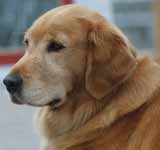
The golden retriever is a breed of dog that originated in Scotland. The Golden Retriever's fur is long, soft and moderately thick, with a water-resistant undercoat. Besides brushing, it needs little care. These dogs come in different colors: from creamy white to dark beige, close to mahogany. A Golden Retriever's skull is broad and the muzzle powerful, broad and deep. The nose is usually black and the ears are moderately large. Golden retrievers have a scissor bite. The body is proportionally built with short loins, deep and well-arched ribs and a long shoulder blade. The golden retriever has strong bones. Height at the withers is 56-61 cm for males and 51-56 cm for females. This dog is very popular in Europe, United States, South Africa, Australia and Japan. It is one of six known retriever breeds (in addition to the Labrador retriever, the Flatcoated retriever, the Curly coated retriever, the Chesapeake Bay retriever and the Nova Scotia duck tolling retriever). The golden retriever is energetic, willing to work and obedient by nature, and is therefore happy to be used as a working dog such as guide dog, assistance dog and hunting dog.
3. Labrador Retriever
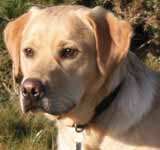
The Labrador Retriever or Labrador for short is a breed of dog that descends from the St. John's dog. The Labrador's coat is short and thick with a water-resistant undercoat and requires little grooming. The dog comes in black, blonde, ranging from creamy white to fox red, and brown. In the past, the Labradors were mainly black. Blond was also seen but to a much lesser extent. Blonde became really popular in the 1970s. Brown was seen as a 'fault' and was not added to the breed standard as a breed characteristic until many years later. Height at the withers of the males is 55 to 57 centimeters and that of the females is from 54 to 56 centimeters. An adult Labrador weighs 25 to 35 pounds and lives an average of 12 years. The Labrador retriever is not difficult to train due to its eagerness to learn and intelligence. They thrive best with a consistent, friendly upbringing.
4. Siberian Husky
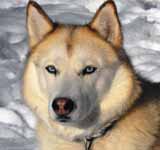
The Siberian husky is a breed of dog belonging to the Arctic and Keeshond of the primeval type. Originally, the husky was used by Siberian nomads to be able to move quickly over snow and ice by sledge. The height at the withers of males is about 53-60 centimeters and for females about 51-56 centimeters, the weight of a male can vary between 21 and 27 kilograms, that of the female between 16 and 23 kilograms. The husky has a medium-length double coat. The colors can vary from white, gray-white and brown-white to black and white and sometimes spotted. Huskies can have brown eyes, blue eyes, or two different colored eyes (moon eyes). A Siberian husky usually has pointed upright ears. The Siberian husky is generally tolerant of humans and other dogs. As pack animals, they generally need company and do not like being alone. Because when purchasing the husky, the appearance is often mainly taken into account and not always the character and the need for exercise and attention, unruly huskies sometimes end up in an animal shelter.
5. Portuguese Water Dog
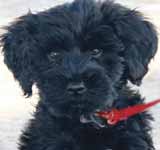
The Portuguese water dog is a breed of dog originally bred by the Portuguese, with the aim of accompanying fishermen when fishing. They are usually black, but can also be brown or white. The hair of the Portuguese Water Dog can be cut into either a "retriever cut" or a "lion cut". In the lion cut, the buttocks, muzzle and base of the tail are shaved and the hair on the rest of the body is left untouched. This cut was originally used by the Portuguese fishing dogs to keep their bodies warm, but at the same time to ensure optimal freedom of movement for the hind legs. The tail was kept at full length because in those days some fishermen could not swim. The Portuguese water dog could then possibly bring its owner to safety with its tail. The retriever cut consists of cutting all body hair to about 1 inch (2.5 cm), with some owners further trimming the muzzle and/or the base of the tail. This cut is more modern and is mainly because breeders wanted to make the breed look less unusual to potential buyers.
6. Boxer
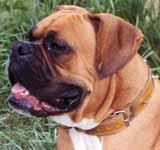
The boxer is a muscular, fine, short hairy dog with a square muzzle and smooth skin. A male dog has a height of 57 to 63 cm and weighs about 32 kg. A female dog is smaller, about 53 to 59 cm, and weighs about 28 kg. The boxer's nose is usually black and wide, slightly lifted and sloping. The muzzle is usually black. It is prognostic, the upper jaw is shortened, the lower jaw grows slightly in front of it and bends upwards, but the boxer has room for his teeth. The lips are heavy but they cover the teeth nicely and are not so heavy and thick that their weight causes them to open the eyes or let the saliva flow out of the mouth, as in some other canines. The expressions on the dog's head are very expressive. The face should have a black mask but a charming white line between the eyes is allowed. The boxer is an athletic dog, firmly muscled with heavy bones, but absolutely classic in line. With a wide muscular hindquarters that provides the explosiveness but also a very elegant walk.
7. Bulldog
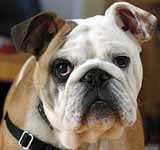
The bulldog has a very smooth coat, wrinkled cheeks, strong front legs but longer back legs. Contrary to the dog's reputation, a bulldog is a very good-natured dog breed. The bulldog is very friendly to both people (including children) and other dog breeds. Bulldogs, however, are stubborn and protective. The English bulldog weighs 22-25 pounds. The coat is short-haired and comes in beige, reddish brown, brindle (with or without a black mask), white (with a lot of dark pigment on the muzzle and eyes) and white spotted. There is also an Olde English Bulldogge, sometimes called the Victorian Bulldog. This one has a slightly coarser build and has a normal length tail. It is also usually higher on its legs. Bulldogs can experience breathing difficulties as their recessed noses make it difficult to air flow. The English bulldog is easily short of breath and very prone to brachycephalic obstructive syndrome, a condition common in dogs with a small skull and flat muzzle, which leads to severe breathing problems and reduced stamina.
8. Bullmastiff
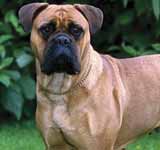
The Bullmastiff is a large breed that grows explosively in the first year of life. This is something you have to take into account. Avoid wild games and extreme strain in the first year of life. The colors are brindle, sand or red. It always has a black mask. Although we sometimes see larger specimens, the weight of a male is between 50 and 60 kg with withers of 63.5 to 68.5 cm and of the females between 40 and 50 kg with withers of 61 to 66 cm. During the first year of life, a Bullmastiff can sometimes be a bit boisterous. After the first year, the average Bullmastiff in the house is a quiet dog who easily adapts to the family situation. They mature spiritually late, so that they can sometimes react reluctantly to new situations at a young age. A Bullmastiff puts his family at number 1 and it is especially fond of children. Nevertheless, a future owner must be firmly in his shoes and be able to give a consistent but certainly not hard upbringing. Due to the explosive growth of the Bullmastiff, it is important to give it good quality food. The coat care is not much. Comb it regularly during moulting. Provide a soft berth, this prevents unsightly lying areas.
9. Yorkshire Terrier
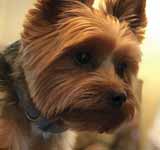
The Yorkshire terrier's origins date back to the 1800s, when Scottish textile workers crossed their Terriers with the local Terriers in the Glasgow area, County York. The York's presumed ancestors are the Clydesdale Terrier and/or the Paisley Terrier, the Scottish Black-and-tan Terrier, the Broke-Haired Terrier (extinct today), the Cairn Terrier and the Maltese. In 1886 the Yorkshire terrier got its current name and in 1898 the breed standard for the Yorkshire terrier was first published. The Yorkshire Terrier, if properly socialized, is social towards other dogs and is loyal to its owner. A york has a spunky character, which is often underestimated because of its small size and its cute eyes. In the past, the york was used to hunt rats and this can still be recognized in their character. They are often quite aggressive, very quickly and do not tire easily. They are also described as affectionate, brave, bright and a good watchman. Yorkshire traits often predominate in crossbreeds. The yorkshires normally have the ears in a V-shape. The shoulder height is up to about 25 centimeters and the weight is between 2.4 and 3.1 kilograms.
10. Pug
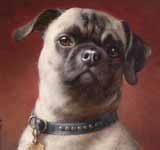
The pug is a compact, stocky dog whose model is in the so-called square model. The height at the withers is approximately 35 centimeters and its weight should be between 6.3 (female) and 8 (male) kilograms. Due to the abnormal shape of its skull, the pug often has to contend with eye, ear and dental problems. This therefore requires extra care from the owner. On the other hand, Pugs can become very old (15 years) and remain playful and energetic for a long time. Because of its appearance, the dog is considered 'droll' by some. It is a human friend who is not naturally aggressive, not even towards peers. Most pugs are watchful. The pug has four recognized colors in the Netherlands, of which beige is the most common. However, the mask should always be black. Especially a beige-colored pug sheds quite a lot and often throughout the year. Another characteristic of the pug is the curled tail, a double curl increases the value.
